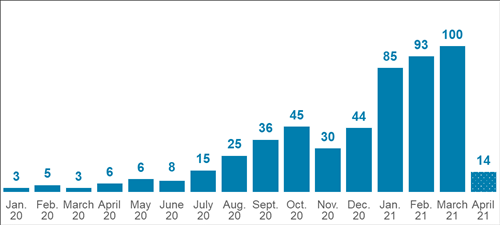Featured Topics
Featured Products
Events
S&P Global Offerings
Featured Topics
Featured Products
Events
S&P Global Offerings
Featured Topics
Featured Products
Events
S&P Global Offerings
Featured Topics
Featured Products
Events
Financial and Market intelligence
Fundamental & Alternative Datasets
Government & Defense
Banking & Capital Markets
Economy & Finance
Energy Transition & Sustainability
Technology & Innovation
Podcasts & Newsletters
Financial and Market intelligence
Fundamental & Alternative Datasets
Government & Defense
Banking & Capital Markets
Economy & Finance
Energy Transition & Sustainability
Technology & Innovation
Podcasts & Newsletters
Blog — 26 Apr, 2021

By Brenon Daly
Even for a financial mania, SPACs didn't last long. These highly speculative schemes have whipsawed from nowhere to everywhere and now back to nowhere – all in a matter of months. Live fast, die young.
Our obituary for the short-but-colorful life of special purpose acquisition companies (SPACs) is a bit facetious, of course. But there's no denying, to use a metaphor favored by cynical Wall Streeters who have seen this sort of thing before, that the SPAC bubble is no longer being pumped up like it had been. Why the deflation? SPAC saturation.
The recent boom, which is mostly playing out in the US, started last summer. Coincidentally enough, that's roughly when equity markets here recovered the ground they lost in the sharp-but-short bear market due to COVID-19. That return of wealth, combined with trillions of dollars of financial support from Washington DC during the pandemic-induced recession, got animal spirts going again.
Along with 'meme stocks,' SPACs became a favorite way for investors to play the market while they were cooped up during the lockdown. Fear of losing money last spring gave way to 'fear of missing out' on making it later in the year. So why not stake Shaq on a deal?
As suddenly as it began, the SPAC craze is now winding down. Investors in blank-check offerings, along with those associated equity market investors that typically put even more money into the 'SPAC-quisitions,' are no longer buying sight unseen. Instead, the group that's looking most closely at SPACs right now seems to be the SEC. Which is as clear a sign as any that a boom has gone bust.
Number of Completed Blank-Check Offerings

Source: S&P Global Market Intelligence